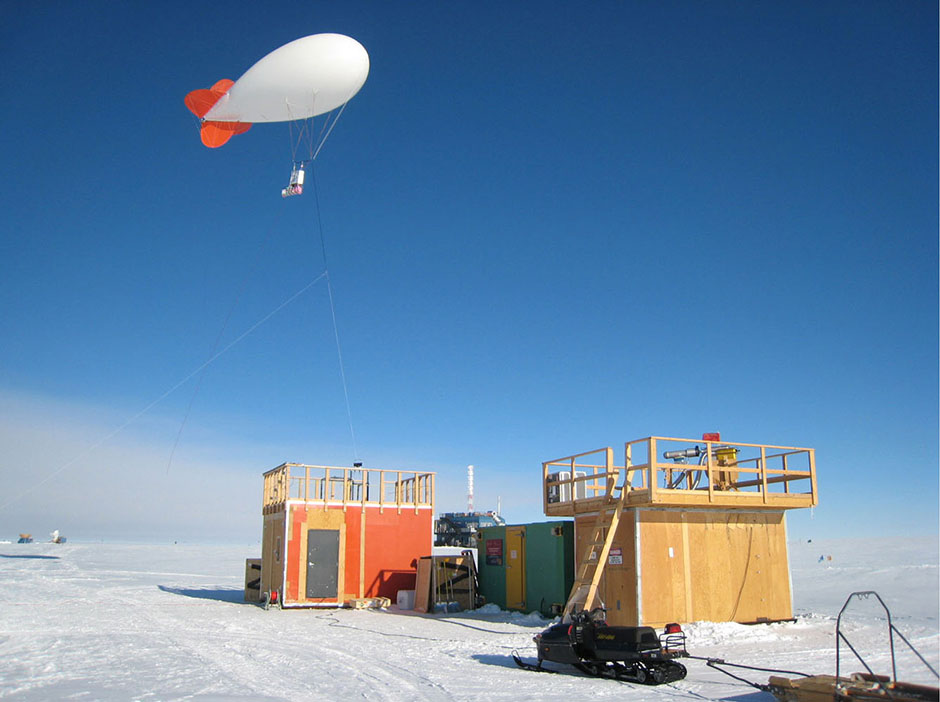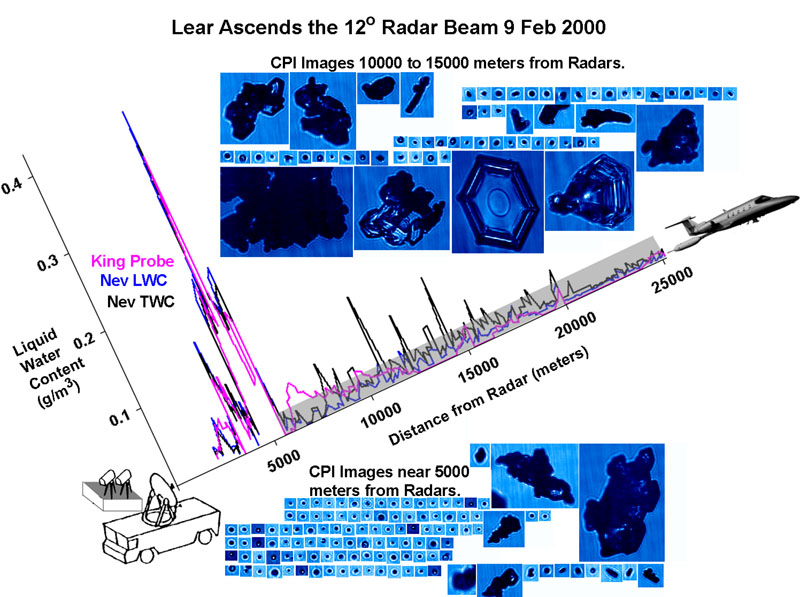Research Projects
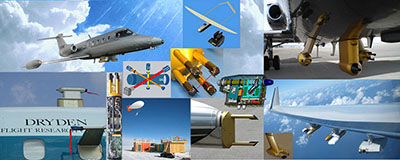 |
SPEC Scientists, engineers and technicians have been involved in over 100 research projects over the past 30 years. These are often international field campaigns involving U.S. and other government agencies and may include up to 150 scientists, engineers, technicians and students from universities and government labs around the world. SPEC is often the only private company participating in these projects. Below we show the logos from a few of these projects, give a brief description of the company’s involvement and list some relevant publications. |
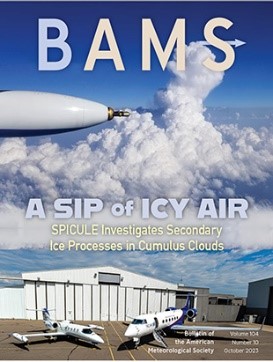
The Secondary Production of Ice in Cumulus Experiment (SPICULE) was staged from the Rocky Mountain Metropolitan Airport in Broomfield, Colorado from 4 – 30 June 2021. The National Science Foundation (NSF) Gulfstream V (GV) operated by the National Center for Atmospheric Research (NCAR) and the SPEC Learjet 35A flew closely coordinated missions in cumulus congestus clouds to measurement the effects of a secondary ice process (SIP). Twelve missions were conducted in Colorado, Wyoming, Kansas, Nebraska, Oklahoma and Texas. The GV predominantly measured aerosols below cloud base and made radar and in situ cloud measurements up to about the 0 °C level while the Learjet made repeated cloud penetrations from 0 °C to the – 20 °C level. Ice nucleating particles (INPs) were measured by instruments provided by Colorado State University and Environment Change and Climate Canada provided an up/down Ka-Band radar on the Learjet. Unique measurements of cloud properties showed how the effects of cloud base temperature and aerosol properrties influenced SIP via the fragmentation of freezing drops. An example of radar and microphysical measurements from the Learjet are shown below.
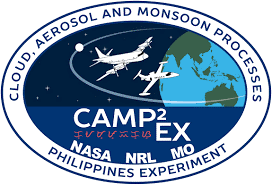
The NASA Cloud, Aerosol and Monsoon Processes Philippines Experiment (CAMP2Ex) was staged from Clark Air Force Base in the Philippines. The project is a response to the need to deconvolute the fields of tropical meteorology and aerosol science at the meso-b to cloud level. The goals of CAMP2Ex were to:
Examine how aerosol particle concentration and composition affect the optical and microphysical properties of shallow cumulous congestus clouds; and how, ultimately, these effects relate to the transition from shallower to deeper convection.
Study how spatially inhomogeneous and changing aerosol and cloud fields impact three-dimensional heating rates and fluxes, and determine the extent to which three dimensional effects may feedback into the evolution of the aerosol, cloud, and precipitation fields.
Determine the meteorological features that are the most influential in regulating the distribution of aerosol particles throughout the regional atmosphere and, ultimately, aerosol lifecycle, and ascertain the extent to which aerosol-cloud interactions studies are confounded and/or modulated by co-varying meteorology.
The NASA Earth Science Division P-3 research aircraft and the SPEC, Inc. Lear Jet 35A flew 12 missions over the Philippine and South China Seas during the period 20 August to 10 October 2019. The aircraft operated in close coordination studying the effects of aerosols on tropical cumulus clouds in clean and polluted atmospheres. The Learjet focused on in situ measurements of cloud-particle microphysics and secondary ice production while the P-3 made measurements of aerosols and used remote sensors to retrieve cloud properties.
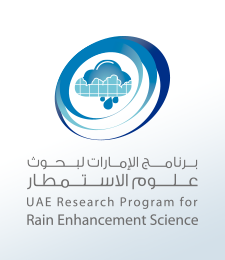
UAE 4th Cycle Award: Selected out of 81 international research proposals that included 378 scientists and researchers affiliated with 159 research institutes from 37 countries on 5 continents, SPEC Inc. is the first institution to receive a 2nd UAE Research Program for Rain Enhancement Science (UAEREP) award in January, 2021. The 1st award was given to SPEC in 2017 during the 2nd Cycle UAEREP program. Under the 4th Cycle award, SPEC will build on results obtained from its 2nd Cycle 2019 field project in the UAE conducted with its Learjet research aircraft. Data collected from the previous field campaign led to three journal publications that describe a natural secondary ice process (SIP) that can lead to rain enhancement through hygroscopic seeding at cloud base. SPEC will return in 2023 with its Learjet research aircraft and join the NCM King Air to investigate the effects of seeding with nano-material coated salt. Joining SPEC in the 4th Cycle award are two former 2nd Cycle awardees, the Finnish Meteorology Institute (FMI) and the University of Reading (UoR). FMI will continue numerical modeling studies and include the effects of the SIP to determine the degree of rain enhancement on the ground. UoR will continue its research on a miniature electrical coronoa emitter that is intended to coagulate subcloud aerosols and improve hygroscopic seeding with nano materials at cloud base. See presentation slides.
For more details, click here.
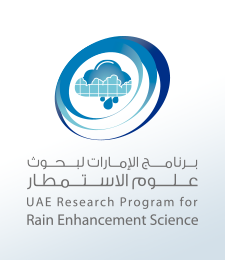
UAE 2nd Cycle Award — Selected out of 91 international research proposals that included over 398 scientists and researchers affiliated with 180 research institutes from 45 countries, Dr. Paul Lawson was the first scientist in the U.S. to receive the UAE Research Program for Rain Enhancement Science award in January, 2017. Under the award, he will lead a research team from SPEC in investigating the role of ice production in cumulus clouds on precipitation production. In this second cycle of the award, winners also included Prof. Hannele Korhonen, from Finland, and Prof. Giles Harrison, from the U.K. Prof. Korhonen was awarded for her research investigating the role of atmospheric aerosols in precipitation production efficiency. Prof. Harrison was awarded for his research into the electrical properties of clouds and their relation to rain production. See UAE Awards Video.
For more details, click here.
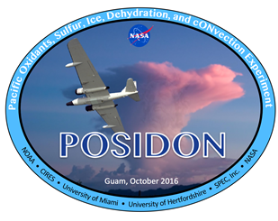
Pacific Oxidants, Sulfur, Ice, Dehydration, and cONvection Experiment (POSIDON) — The NASA POSIDON project took place in Guam in the fall of 2016 and focused on the chemistry, cirrus clouds, and dehydration of the tropical upper troposphere and lower staratosphere in the Western Pacific. SPEC instrumented the NASA WB-57 with a CPI, FCDP, and 2D-S to investigate the microphysical properties of anvil cirrus detrained from deep convection as well as thin cirrus near the tropopause.
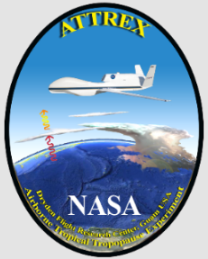
Airborne Tropical TRopopause EXperiment (ATTREX) — A multi-year project to investigate the physical processes and chemical composition of the tropical tropopause layer and the role of stratospheric water vapor in Earth's energy budget and climate, ATTREX was based out of Armstrong Flight Research Center (AFRC), California 2011-2013 and Guam in 2014. SPEC's contribution to the payload aboard the NASA Global Hawk included the FCDP and Hawkeye to investigate the microphysical properties of TTL cirrus.
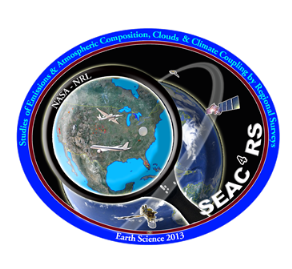
Studies of Emissions, Atmospheric Composition, Clouds and Climate Coupling by Regional Surveys (SEAC4RS) — The NASA SEAC4RS campaign took place in Houston, Texas in 2013. SPEC was heavily involved in the campaign, collecting data with the FCDP on the NASA ER-2; the CPI, FCDP, 2D-S, and HVPS on the NASA DC-8, and the fully instrumented SPEC Learjet. Utilizing these three aircraft, the successful goals of the mission were to:
1. Determine how pollutant emissions are redistributed via deep convection throughout the troposphere.
2. Determine the evolution of gases and aerosols in deep convective outflow and the implications for UT/LS chemistry.
3. Identify the influences and feedbacks of aerosol particles from anthropogenic pollution and biomass burning on meteorology and climate through changes in the atmospheric heat budget (i.e., semi-direct effect) or through microphysical changes in clouds (i.e., indirect effects).
4. Serve as a calibration/validation test bed for future satellite instruments and missions.
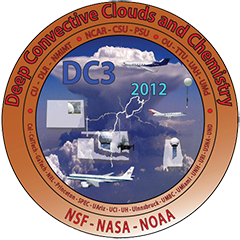
Convective Clouds and Chemistry Project (DC3) — SPEC participated in the Deep Convective Clouds and Chemistry Project in Salina, Kansas in 2012. SPEC’s 3V-CPI was installed on the NSF/NCAR Gulfstream-V (GV) aircraft, which was the primary platform to study the high altitude outflow of the storms, and was instrumented to measure a variety of gas-phase species, radiation, and cloud particle characteristics. SPEC's 2D-S also flew on the NASA DC-8 for the project.
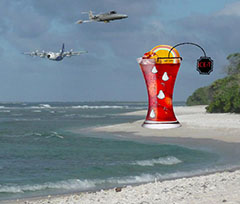
The Ice in Clouds ExperimentTropical (ICE-T) — Staged from St. Croix, USVI in July 2011. Under funding from the NSF, the NSF/NCAR C-130 and the SPEC Learjet participated in this project, which focused on better understanding the formation and development of ice in tropical cumulus clouds. More than 50% of the earth's precipitation originates in the ice phase. Ice nucleation, therefore, is one of the most basic processes that leads to precipitation. Progress in modeling precipitation accurately requires a better understanding of ice formation processes. See Lawson et al. (2015).
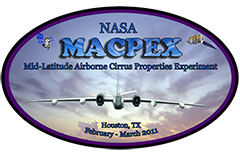
The Mid-latitude Airborne Cirrus Properties Experiment (MACPEX) — MACPEX utilized the NASA WB-57, which carried the SPEC 2D-S, CPI, HVPS and FCDP probes in an airborne field campaign to investigate cirrus cloud properties and the processes that affect their impact on radiation in April 2011.
Coordinated science flights were focused on the DoE ARM SGP site in Oklahoma and NASA EOS / A-Train satellite observations. Some of the major science questions addressed by MACPEX included:
- How prevalent are the smaller crystals in cirrus clouds, and how important are these for extinction, radiative forcing, and radiative heating?
- How are cirrus microphysical properties (particle size distribution, ice crystal habit, extinction, ice water content) related to the dynamical forcing driving cloud formation?
- How are cirrus microphysical properties related to aerosol loading and composition, including the abundance of heterogeneous ice nuclei?
- How do cirrus microphysical properties evolve through the lifecycles of the clouds, and what role do radiatively driven dynamical motions play? Mitchell et al. (2011), Deng et al. (2012)
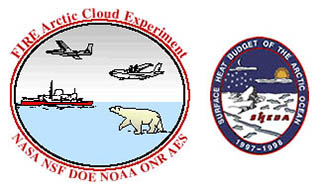
First ISCCP Regional Experiment - Arctic Cloud Experiment (FIRE-ACE) and Surface Heat Budget of the Arctic Ocean (SHEBA) - NSF funded project in 1998 in the Arctic Ocean off northern coast of Alaska to study arctic clouds and their effect on the surface heat budget. CPI flew on the NCAR C-130. See Lawson et al. (2001).
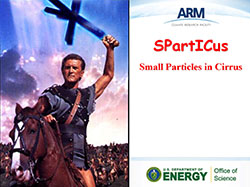
Department of Energy Small Particles in Cirrus Project (SPartICus) — The Department of Energy Small Particles in Cirrus Project was aimed at measuring the contribution of cirrus clouds to the Earth radiation budget. Owing to their location in the cold upper troposphere, cirrus can significantly reduce the outgoing longwave radiation while, at the same time, remaining relatively transmissive to solar energy. Thus, cirrus clouds are the only cloud genre that can exert a direct radiative warming influence on the climate system. It is not surprising, therefore, that general circulation models (GCMs) are especially sensitive to the presence of cirrus in the modeled atmosphere. The SPEC Learjet collected data in cirrus and anvil cirrus over the DOE Southern Great Plains site in Western Oklahoma and under CloudSat/CALIPSO satellite overpasses from January – June 2010. Several significant publications have resulted from this research. Mitchell et al. (2011), Lawson (2011) Deng et al. (2012)
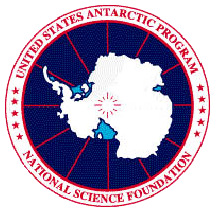
NSF funded project in 2009 using SPEC’s Tethered Balloon System and two ground-based CPI's to collect images of ice crystals in clouds and at the surface at the South Pole. Findings of this study were unique in that clouds with supercooled water at a temperatures < - 30oC were routinely observed. See Lawson and Gettelman (2014), Lawson et al. (2011), Sikand et al. (2010), Sikand et al. (2013). Ice nuclei measurements were also conducted and revealed patterns based on wind direction Ardon-Dryer et al. (2011).

The DOE Indirect and Semi-Direct Aerosol Campaign (ISDAC) — The DOE Indirect and Semi-Direct Aerosol Campaign investigated the effects of aerosols on microphysical and radiative properties of Arctic stratus clouds near the DOE ARM site at Barrow, Alaska. A Convair 580 owned by the Canadian National Research Council (CNRC) and instrumented by Environment Canada was extensively equipped with microphysical, radiative and remote sensors to measure cloud and aerosol properties. SPEC supplied 2D-S and CPI probes, participated in the field project and in data analysis. See Mitchell et al. (2011).
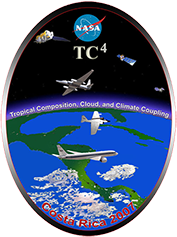
TC4 — In July and August of 2007 SPEC participated in the Tropical Composition, Cloud and Climate Coupling project in Costa Rica. This was the largest NASA earth science project of 2007 and utilized 3 research aircraft. SPEC instrumented both the NASA DC-8 Airborne Laboratory and the NASA WB-57. Both aircraft carried CPI and 2D-S cloud particle probes. The measurements taken have helped researchers better understand microphysical and radiative characteristics of anvils, cirrus, and stratus clouds in the tropics. See Jensen et al. (2009), Lawson et al. (2010), Mitchell et al. (2010), Davis et al. (2010), Mitchell et al. (2011), Lawson (2011)
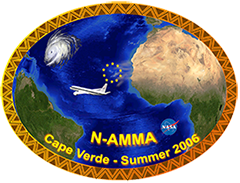
N-AMMA — In August and September 2006 SPEC participated in the NASA - African Monsoon Multidisciplinary Activities project. SPEC flew the CPI and 2D-S on the NASA DC-8 Airborne Laboratory. The aircraft was stationed on the island of Sal, part of the Cape Verde islands off the west coast of Africa. This highly publicized project focused on improving our understanding of the origins and development of hurricanes and tropical storms that form off the coast of Africa and later threaten South, Central and North Americas. See Lawson et al. (2010).
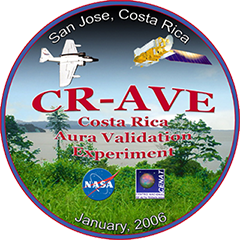
Costa Rica Aura Validation Experiment (CR-AVE) — a NASA research project in January and February 2006 focused on microphysical and chemical properties of the Upper Troposphere/Lower Stratosphere (UTLS). SPEC installed CPI and 2D-S probes on the NASA WB-57 and captured the first high-resolution digital images of ice particles in subvisible cirrus in the upper troposphere. Both instruments performed exceedingly well in the most extreme conditions they have ever encountered: temperatures less than -90 degrees Celsius and atmospheric pressures less than 1 PSI. Significant publications have used SPEC CPI and 2D-S data from the CR-AVE project. See Lawson et al. (2008), Froyd et al. 2010, Jensen et al. (2010).

Mid Latitude Cirrus Experiment (MidCiX) — A joint NASA and DOE research project in April and May 2004. WB-57 research aircraft flew in cirrus primarily over DOE's ARM SGP site to study cirrus clouds effects on Earth's radiation budget. SPEC flew a CPI on the WB-57 and flew a coordinated flight with the WB-57 using the SPEC Learjet in wave clouds over Colorado. See Lawson et al. (2006).
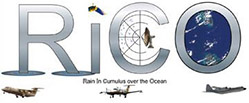
Rain in Cumulus over the Ocean — a research project funded by NSF ran from December 2004 through January 2005. The main focus was improving understanding of the warm rain process in trade wind cumulus using the NCAR C-130, FAAM BAE-146 and University of Wyoming King Air working in coordination, two sounding locations including NOAA's ship the Seward Johnson and a radar location on Barbuda. SPEC flew the CPI and 2D-S on the NCAR C-130. See Baker et al. (2010), Baker et al. (2009), Baker and Lawson (2010).

AIRS. Alliance Icing Research Study — a collaborative effort involving several Canadian and U.S. research agencies and universities. The main research goal was to improve the ability to remotely sense aircraft icing regions using satellite, aircraft and ground-based systems thus improving the ability to forecast icing conditions and understand how the conditions form. The SPEC Learjet, equipped with a full complement of micro-physical instruments climbed along the ground-based radar's slant path to collect in situ measurements and compare with radar observations (see figure and click on it to enlarge).
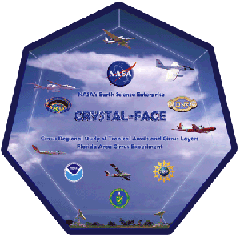
The Cirrus Regional Study of Tropical Anvils and Cirrus Layers - Florida Area Cirrus Experiment (CRYSTAL-FACE) — Cirrus Regional Study of Tropical Anvils and Cirrus Layers - Florida Area Cirrus Experiment - a multi-agency research program that studied anvils and upper-level cirrus over Florida in July 2002. Remote sensing satellites, 7 research aircraft, and radar sites were utilized. SPEC flew a CPI on NASA's WB-57 and a CPI flew on the University of North Dakota Citation.
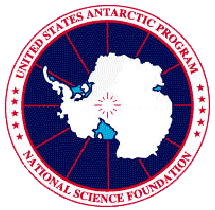
South Pole Station Ice Crystal Study — NSF funded project in 2001 and 2002 using two CPI's to collect images of ice crystals at the South Pole. Nearly 1 million ice crystals were digitally imaged and categorized by particle shape. See Lawson et al. (2006).
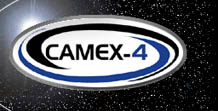
The Fourth Convection and Moisture Experiment - NASA project in 2001, data collected within thunderstorms, hurricanes and tropical storms in Florida. CPI flew on NASA DC-8.
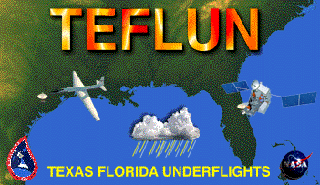
TRMM Texas and Florida Underflights (TEFLUN) A and B - NASA funded project in 1998 and 2000 for ground validation of TRMM satelite. SPEC Learjet and CPI flew during projects.
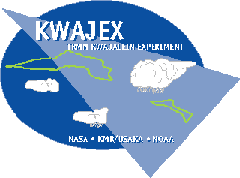
TRMM Kwajalien Experiement (KWAJEX) — TRMM Kwajalien Experiement - NASA project in 1999 for aircraft validation of TRMM satellite instruments. Data collected in tropical convective systems over ocean near the Kwajalien Atoll in the Pacific Ocean. CPI and HVPS probes were onboard the University of Washington Convair 580, University of North Dakota Citation, and NASA DC-8 research aircraft.

